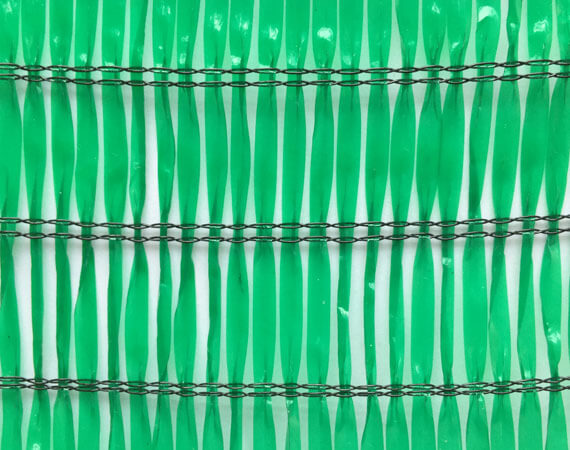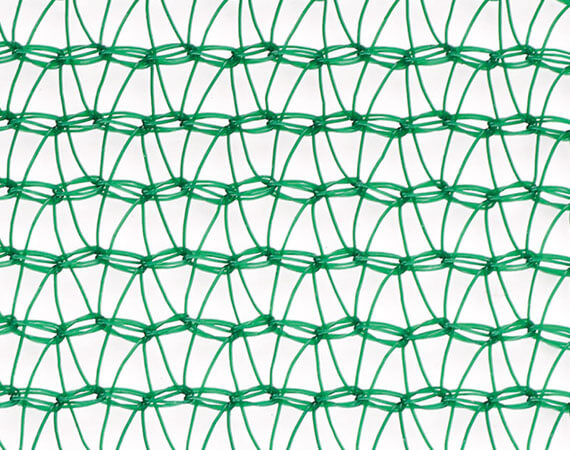- All
- Product Name
- Product Keyword
- Product Model
- Product Summary
- Product Description
- Multi Field Search
Views: 0 Author: Shijiazhuang Qibang Imp&Exp Co.,Ltd. Publish Time: 2023-06-30 Origin: www.sjzqibang.com








Shade netting is a specially designed mesh material widely used to provide shade against sunlight and control temperature for various applications. It serves as a critical asset in agricultural practices, construction sites, and various other outdoor events.
The fabric's selection can significantly impact the effectiveness of the shade provided and, consequently, the success of the intended use. There are two major types of shade netting, woven and knitted, each with its unique characteristics, advantages, and disadvantages.
Woven shade netting is a type of shade fabric created by interlacing two or more threads at right angles. This weaving process results in a tight, sturdy fabric that is rigid and somewhat inflexible.
The key features of woven shade cloth include its high strength, stability, and resistance to tearing. However, it is also less flexible and harder to manipulate than its knitted counterpart.
Its inherent durability makes it ideal for long-term applications, woven shade cloth is often used in agricultural settings to provide shade for crops, nurseries, or livestock. It's also useful for fencing, and privacy screens due to its opacity.
Knitted shade netting is made by interlocking a series of looped yarns, similar to knitting a fabric.This process allows the fabric to maintain its form and durability while providing flexibility, making it less prone to ripping and tearing.
Knitted shade cloth is often used for greenhouses, gardens, or patios where there's a need for both shade and ventilation. It is also used in construction sites, sports facilities (like tennis courts) to serve as windbreaks or barriers. The stretching characteristic makes it more adaptable to irregular shapes or structures.


Woven Shade Netting Knitted Shade Netting
In comparing woven and knitted shade netting, several factors stand out. Woven shade netting, due to its manufacturing process, is more robust and rigid, providing consistent shade and resistance to harsh weather conditions. However, it is less flexible and can be more challenging to install and manipulate, often requiring specialized tools.
Conversely, knitted shade cloth is flexible, easy to install, and maintain. It can withstand movement and manipulation without tearing, making it suitable for mobile or temporary setups. However, its level of shade may vary due to its structure.
In terms of cost-effectiveness, woven shade netting generally has a higher initial cost due to its manufacturing process and material requirements. However, its durability can make it a worthwhile investment for long-term use. Knitted shade netting, while cheaper, may require replacement more frequently, impacting its overall cost over time.
From an environmental standpoint, both types of shade cloth have the potential to be sustainable, depending on the materials used and their lifespan. However, due to their potential for recyclability and the energy consumption in production, knitted shade cloth may have a slight edge.
An excellent example of woven shade netting usage is in permanent greenhouses where its stability and high resistance to wind make it ideal for long-term agricultural applications.
Conversely, a construction site requiring temporary shade and flexibility would benefit more from the use of knitted shade netting due to its adaptability and easy installation.
Choosing between woven and knitted shade netting depends on factors such as the specific application, budget, and climatic conditions.
Woven shade cloth would be a better choice for long-term, stationary applications, while knitted shade cloth is preferable for temporary or movable setups.
It is always beneficial to seek advice from professionals or experienced individuals in this field to make an informed decision.
Shade netting plays a significant role in various applications, from agriculture to outdoor events. Both woven and knitted shade cloth has unique characteristics that make them suitable for different uses.
Woven shade netting, robust and highly durable, is ideal for agricultural applications. In contrast, knitted shade netting, characterized by its flexibility and ease of installation, serves perfectly for projects demanding versatility and quick setup.
Choosing between these two types isn't a simple decision. It requires a thorough understanding of their properties and a careful assessment of your project needs, budget, and climatic conditions. Furthermore, seeking advice from experts can provide invaluable insights tailored to your specific circumstances.
Should you require any shade netting for your projects, don't hesitate to reach out to us at QiBang. Our team is ready and eager to assist you in making the right choice to meet your needs perfectly.
Further Learning: